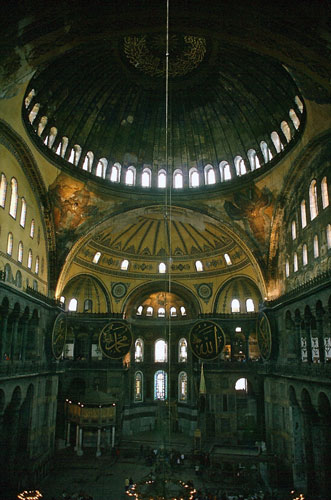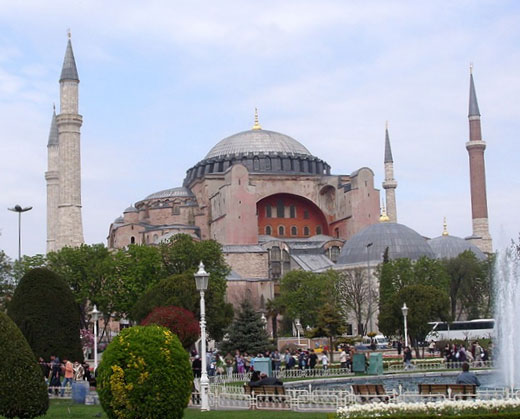
Wikipedia Commons

Christianity, unlike the pagan religions that preceded it believes in the presence of a transcendent and incarnate God. For early Christian architects the challenge was how to express in material form the ideals and presence of an immaterial God. The western Roman Catholic Church adopted and evolved a model based on the horizontal axis of the Roman basilica. In the east, the Byzantines and the Eastern Orthodox Church developed a layout based on a centralized plan and domed architecture.
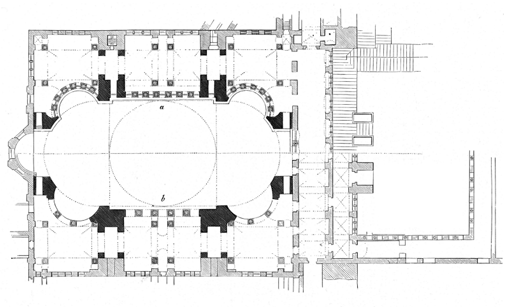
The Hagia Sophia is considered the finest example of Byzantine ecclesiastical architecture. It was built as the Cathedral of Constantinople (Istanbul, Turkey) by Emperor Justinian between c. 532 – 537.
The central dome of the church was made possible by use of pendentives. Invented by the Romans it was adopted and further developed by the Byzantines. A pendentive is a type of construction that allows a circular dome to be placed over a square space. The pendentives are the concave triangular segments that are created when four large arches rise upward from the four edges of the square space and transition to the circular base of a hemispherical dome. The pendentives receive the weight of the dome and then concentrate it downward along the tapering mass of the pendentives to the four corners of the square base. Since the spaces beneath the large arches are essentially non-load bearing large windows can be used to fill the interior with light.
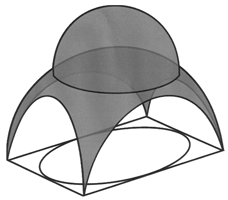
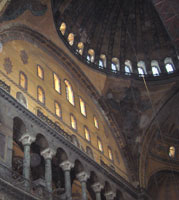
The official court historian Procopius wrote the following concerning the dome:
“And since the arches where they are joined together are so constructed as to form a four-cornered plan, the stone-work between the arches produces four triangles. And while each supporting end of a triangle, having been contracted to a point by the coming together of each pair of arches, makes the lower point an acute angle, yet as the triangle rises and its width is extended by the intermediate surface, it ends in the segment of a circle which it supports, and forms the remaining angles at that level. Upon this circle rests the huge spherical dome which makes the structure exceptionally beautiful. Yet it seems not to rest upon solid masonry, but to cover the space with its golden dome suspended from Heaven.”
In addition to the windows in the clerestories beneath the pendentives there are forty windows under the base of the central dome that flood the interior with light. As a result the dome appears to float above its base on a cushion of light. The visual effect is further enhanced by magnificent golden mosaics and marble surfaces that line the interior surfaces of the church. Or as Procopius wrote: “... it abounds exceedingly in sunlight and in the sun’s rays from the marble. Indeed one might say that its interior is not illuminated from without by the sun, but that the radiance comes into being within it, such an abundance of light bathes the shrine.”
